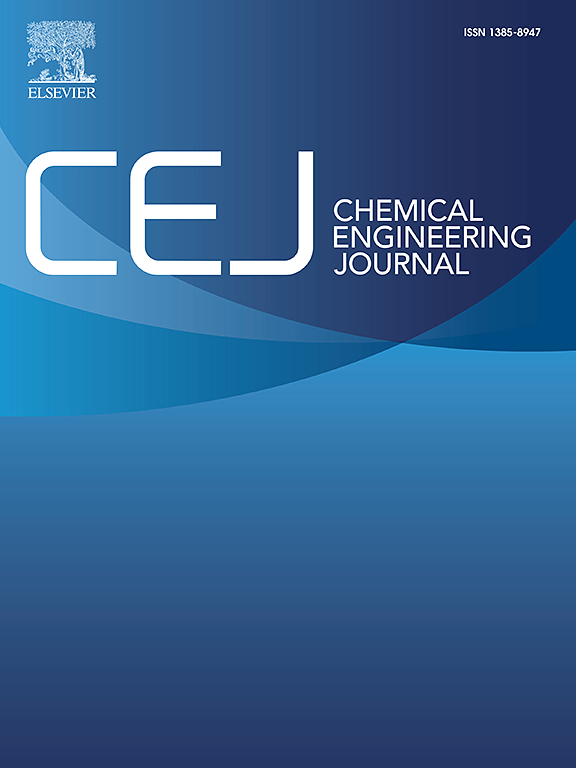超声辅助DMSO快速淀粉凝胶制备方法:工艺和生物医学应用
IF 13.2
1区 工程技术
Q1 ENGINEERING, CHEMICAL
引用次数: 0
摘要
淀粉凝胶具有精确控制的粘度显示相当大的潜力,作为局部载体的个性化治疗应用。然而,传统的凝胶工艺往往效率低下,难以调节,从而限制了淀粉凝胶的有利性质的有效利用。为了解决这些局限性,一种超声辅助的二甲亚砜(DMSO)溶剂法被开发出来,使药用植物来源的淀粉一步凝胶化。这种创新的方法生产的凝胶具有广泛的粘度范围,可以稳定地封装各种成分,包括甲氨蝶呤、二硫化钼和复合二硫化钼。本研究综合分析了淀粉凝胶的性质,并利用灰色预测模型和分子动力学模拟阐明了淀粉凝胶的成胶机理。结果表明,DMSO与水的结合能快速形成淀粉凝胶,且该过程与淀粉取代度呈正相关。此外,凝胶表现出高负载能力和良好的生物相容性,使其适用于牛皮癣治疗和血液透析膜修饰等应用。该方法不仅扩展了淀粉凝胶制备的可用技术,而且还增强了临床应用和先进药物输送系统的开发。本文章由计算机程序翻译,如有差异,请以英文原文为准。

Ultrasound-assisted DMSO method for rapid starch gel preparation: process and biomedical applications
Starch gels with precisely controlled viscosity show considerable potential as topical carriers for personalized therapeutic applications. However, conventional gelation processes are often inefficient and difficult to regulate, thereby limiting the effective utilization of the favorable properties of starch gels. To address these limitations, an ultrasound-assisted dimethyl sulfoxide (DMSO) solvent method was developed to enable one-step gelation of starch derived from medicinal plant sources. This innovative approach produces gels with a wide viscosity range and can stably encapsulate diverse components, including methotrexate, molybdenum disulfide, and composite molybdenum disulfide. In this study, the properties of the starch gel were comprehensively analyzed, and its gelation mechanism was elucidated using grey prediction modeling and molecular dynamics simulations. The results indicate that the combination of DMSO and water enables rapid starch gel formation, with the process exhibiting a positive correlation with the degree of starch substitution. Furthermore, the gel demonstrated high loading capacity and excellent biocompatibility, making it suitable for applications such as psoriasis treatment and modification of hemodialysis membranes. This method not only expands the techniques available for starch gel preparation but also enhances clinical applications and the development of advanced drug delivery systems.
求助全文
通过发布文献求助,成功后即可免费获取论文全文。
去求助
来源期刊

Chemical Engineering Journal
工程技术-工程:化工
CiteScore
21.70
自引率
9.30%
发文量
6781
审稿时长
2.4 months
期刊介绍:
The Chemical Engineering Journal is an international research journal that invites contributions of original and novel fundamental research. It aims to provide an international platform for presenting original fundamental research, interpretative reviews, and discussions on new developments in chemical engineering. The journal welcomes papers that describe novel theory and its practical application, as well as those that demonstrate the transfer of techniques from other disciplines. It also welcomes reports on carefully conducted experimental work that is soundly interpreted. The main focus of the journal is on original and rigorous research results that have broad significance. The Catalysis section within the Chemical Engineering Journal focuses specifically on Experimental and Theoretical studies in the fields of heterogeneous catalysis, molecular catalysis, and biocatalysis. These studies have industrial impact on various sectors such as chemicals, energy, materials, foods, healthcare, and environmental protection.
 求助内容:
求助内容: 应助结果提醒方式:
应助结果提醒方式:


